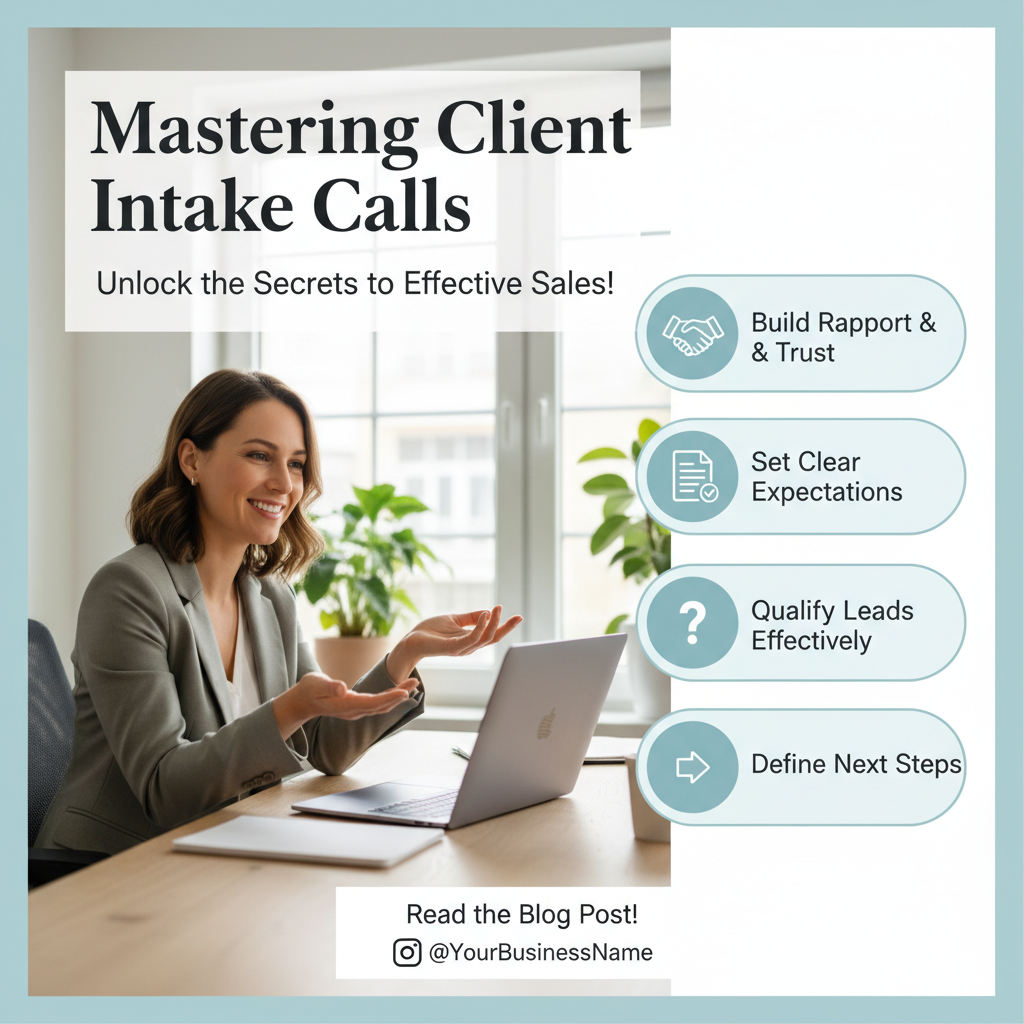Mastering Client Intake Calls for Effective Sales

Description
Unlock the secrets to transforming your client intake calls into powerful tools for boosting your sales process. Learn the art of asking the right questions, building strong rapport, and setting clear expectations to turn potential leads into loyal clients.
Building Rapport: The Foundation of Successful Client Calls
The first step in mastering client intake calls is establishing a strong rapport. Building rapport sets the stage for a meaningful conversation and helps potential clients feel valued and understood. Begin by engaging in a bit of small talk to make the client comfortable. Ask about their day or how they heard about your services. This initial connection can break the ice and pave the way for more in-depth discussions.
It's crucial to listen actively and show genuine interest in the client's needs and concerns. Use a nurturing tone and mirror their speaking pace to create a sense of familiarity. By doing so, you not only make the client feel at ease but also position yourself as a trustworthy partner who is genuinely interested in solving their problems.
Setting Upfront Contracts: Establishing Clear Expectations
An upfront contract is a powerful tool for setting clear expectations and defining the purpose of the call. Start by outlining the agenda: mention the topics you will cover, the duration of the call, and the desired outcome. For instance, you might say, "I'd like to spend the next 10 minutes understanding your project and its goals. If it seems like a good fit, we can discuss the next steps."
Establishing an upfront contract prevents misunderstandings and ensures that both parties are aligned on the call's objectives. It also gives you the opportunity to qualify the lead early on, saving time for both you and the client. This approach not only enhances professionalism but also demonstrates your commitment to an organized and efficient process.
Qualifying Leads Effectively: The Key Questions to Ask
Qualifying leads is essential to ensure that your time and resources are invested wisely. Effective qualification involves asking the right questions to gauge the client's needs, budget, and timeline. Key questions might include:
- What is the scope of your project?
- Why have you decided to undertake this project now?
- What is your budget range for this project?
- Can you describe any specific challenges or pain points you're experiencing?
These questions help you understand the client's motivations and priorities, enabling you to determine whether they are a good fit for your services. Additionally, understanding their pain points allows you to tailor your pitch and demonstrate how your solutions can address their specific needs.
Ensuring a Clear Next Step: Converting Leads into Loyal Clients
A successful client intake call should always conclude with a clear next step. This could be scheduling an in-person meeting, a follow-up call, or sending additional information. Clearly outline what will happen next and confirm the client's agreement. For example, "Based on our conversation, it seems like we could be a good fit. Let's schedule a meeting for next week to discuss the details further."
Setting a clear next step ensures that the momentum of the call is maintained and that both parties know what to expect going forward. It also reinforces your professionalism and organizational skills, further building the client's trust in your ability to deliver.
By mastering the art of client intake calls, you can transform potential leads into loyal clients. Building rapport, setting upfront contracts, qualifying leads effectively, and ensuring a clear next step are all crucial components of this process. Implement these techniques to enhance your sales process and foster long-lasting client relationships.


